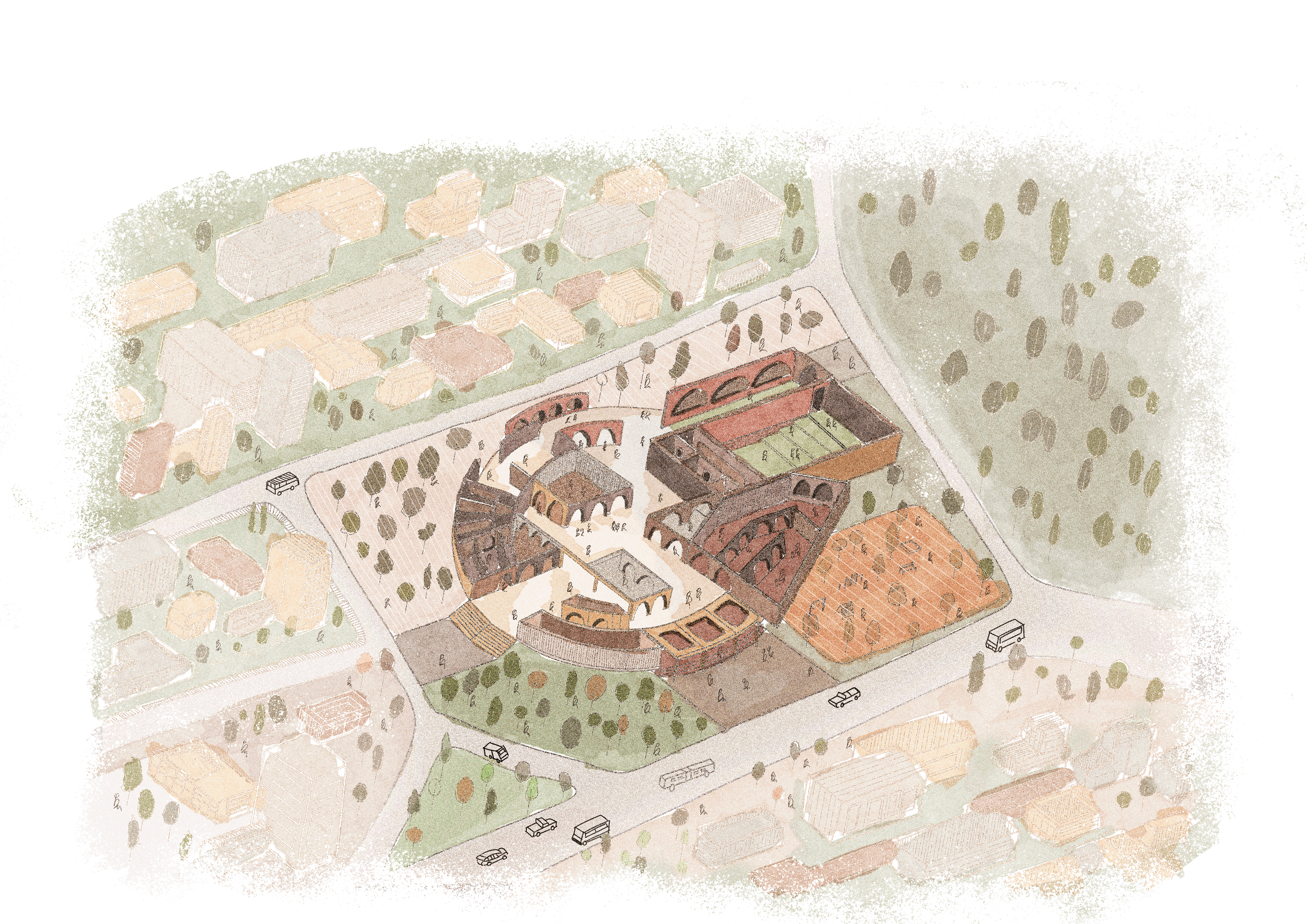
Mediatheque
PROEJCTED REALITES |
UNDERGRADUATE THESIS PROJECT
Typology: Mediatheque
Timeline: Summer 2021
Software: Rhino, SketchUp, Lumion, Enscape, Adobe Suite
Tutors: Ar. Nikhil Kohale
Decades before digital technology conjured up a congruency between reality and image, it was cinema that interrogated both the complexities and the critical potentials of architecture.
When an audience enters into and subsequently becomes immersed in the body of the film as they would a building.
The project mainly aims to gather the city’s cultural functions under one roof and it will also be the new meeting place that gathers a diversity of activities as a break in peoples’ busy life. Spaces are created to attract the public to visually experience the process that goes behind the scenes. The goal is to create a realistic and, or abstract visual world where it dramatizes the atmosphere for eventful expression. We can drive community engagement by combining an urban theatre space with other public spaces.
The project mainly aims to gather the city’s cultural functions under one roof and it will also be the new meeting place that gathers a diversity of activities as a break in peoples’ busy life. Spaces are created to attract the public to visually experience the process that goes behind the scenes. The goal is to create a realistic and, or abstract visual world where it dramatizes the atmosphere for eventful expression. We can drive community engagement by combining an urban theatre space with other public spaces.
ATMOSPHERE









The aim is to generate more public interest behind the behind-the-scenes and contribute to the cinematic experience. Introduced by sociologist Ray Oldenburg in his book ‘The great good place’, ‘Third place’ is a concept of community building. It is envisioned as a separate space from the home (the first place) and the workplace (the second place), serving as a place where people can meet and
communicate at their leisure.
SITE STUDY

Responsive polymers, also known as smart polymers, offer transhumanists a powerful tool for enhancing their capabilities and advancing human potential. These versatile materials can undergo reversible changes in response to external stimuli, allowing transhumans to adapt and modify their physical and chemical properties. By integrating responsive polymers into their bodies, transhumans can achieve remarkable advancements in areas such as regenerative medicine, drug delivery systems, and sensory augmentation. These polymers can be designed to respond to specific cues, enabling targeted drug release, tissue regeneration, and enhanced sensory perception. With their ability to adapt and self-regulate, responsive polymers empower transhumanists to push the boundaries of human capabilities and unlock new possibilities for self-improvement and evolution.
FOYER

Decades before the advent of digital technology, cinema emerged as a medium that delved into the intricate relationship between reality and image, presenting architecture as a subject of exploration and reflection. Just as entering a building immerses individuals into a spatial experience, cinema captivates audiences by drawing them into the world it constructs. Building upon this intersection of architecture and film, the project seeks to unify the city's cultural functions within a single architectural entity—a new meeting place designed to accommodate a diverse range of activities and offer respite from the fast-paced urban life.
EXPLODED ISOMETRIC

The architectural design of the project aims to create spaces that captivate the public's attention, inviting them to witness the behind-the-scenes processes that bring cinematic magic to life. By presenting a realistic or abstract visual world, the project seeks to heighten the atmospheric drama, amplifying the eventful expressions that unfold within. Furthermore, the integration of an urban theater space with other public areas fosters community engagement, generating public interest in the behind-the-scenes aspects of filmmaking and enhancing the overall cinematic experience.